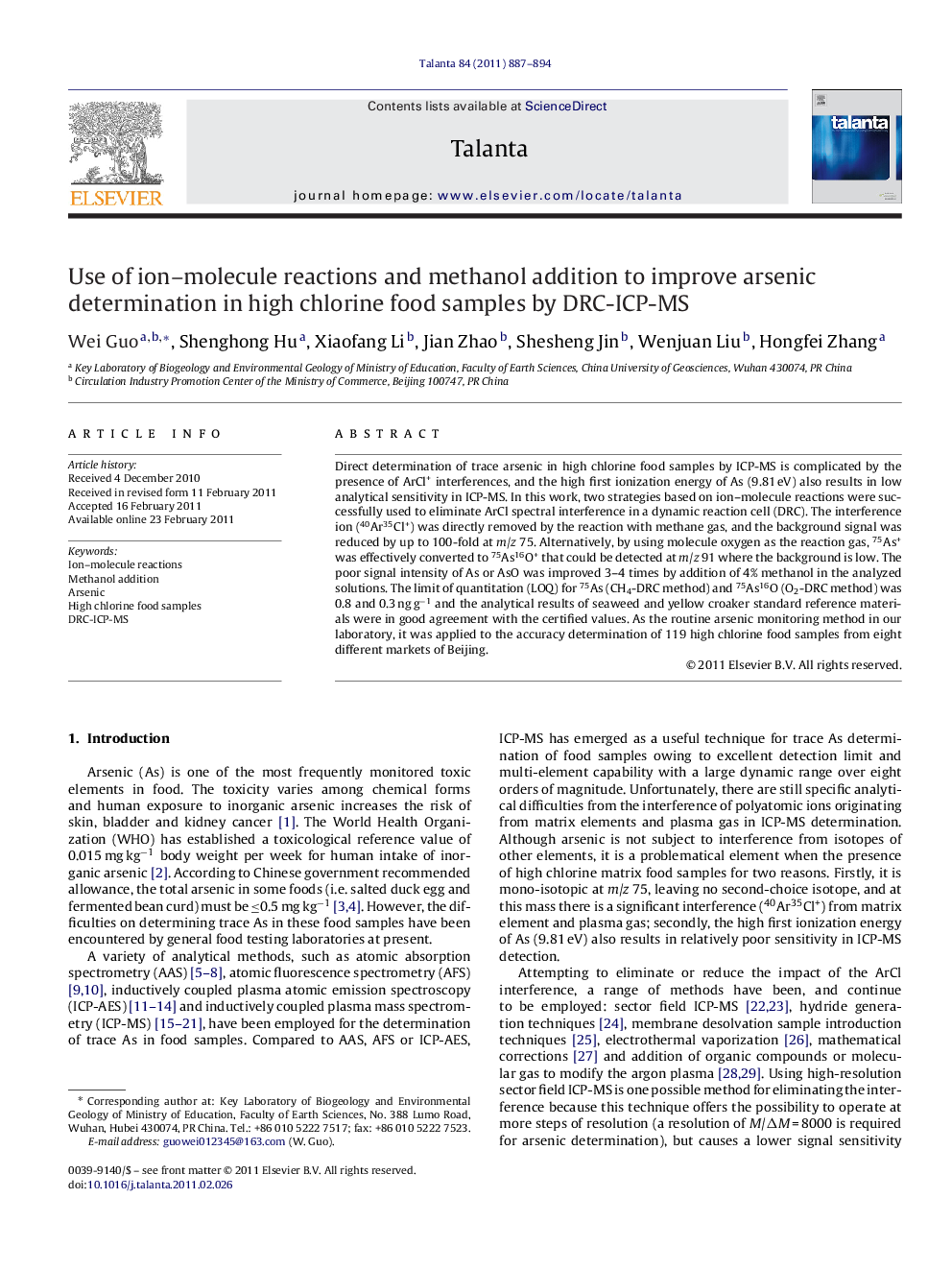| Article ID | Journal | Published Year | Pages | File Type |
|---|---|---|---|---|
| 1244186 | Talanta | 2011 | 8 Pages |
Direct determination of trace arsenic in high chlorine food samples by ICP-MS is complicated by the presence of ArCl+ interferences, and the high first ionization energy of As (9.81 eV) also results in low analytical sensitivity in ICP-MS. In this work, two strategies based on ion–molecule reactions were successfully used to eliminate ArCl spectral interference in a dynamic reaction cell (DRC). The interference ion (40Ar35Cl+) was directly removed by the reaction with methane gas, and the background signal was reduced by up to 100-fold at m/z 75. Alternatively, by using molecule oxygen as the reaction gas, 75As+ was effectively converted to 75As16O+ that could be detected at m/z 91 where the background is low. The poor signal intensity of As or AsO was improved 3–4 times by addition of 4% methanol in the analyzed solutions. The limit of quantitation (LOQ) for 75As (CH4-DRC method) and 75As16O (O2-DRC method) was 0.8 and 0.3 ng g−1 and the analytical results of seaweed and yellow croaker standard reference materials were in good agreement with the certified values. As the routine arsenic monitoring method in our laboratory, it was applied to the accuracy determination of 119 high chlorine food samples from eight different markets of Beijing.
